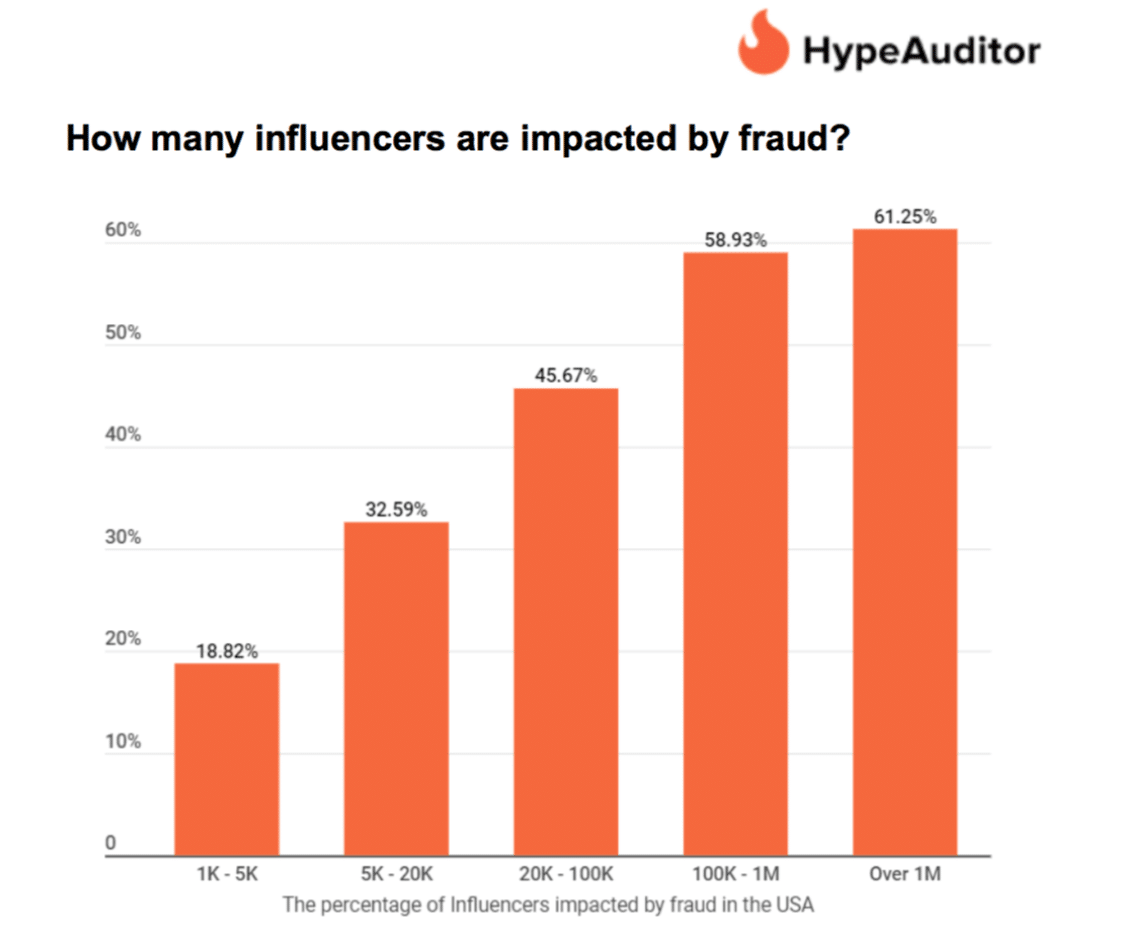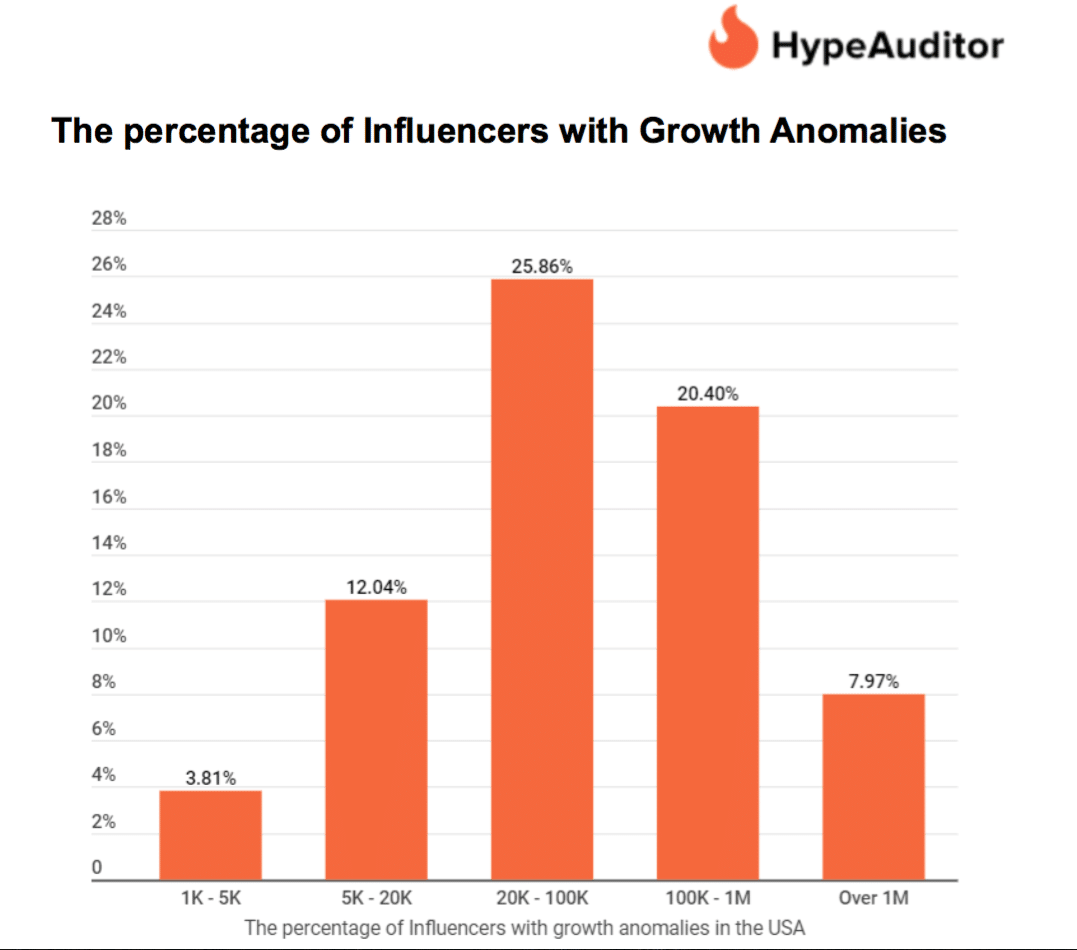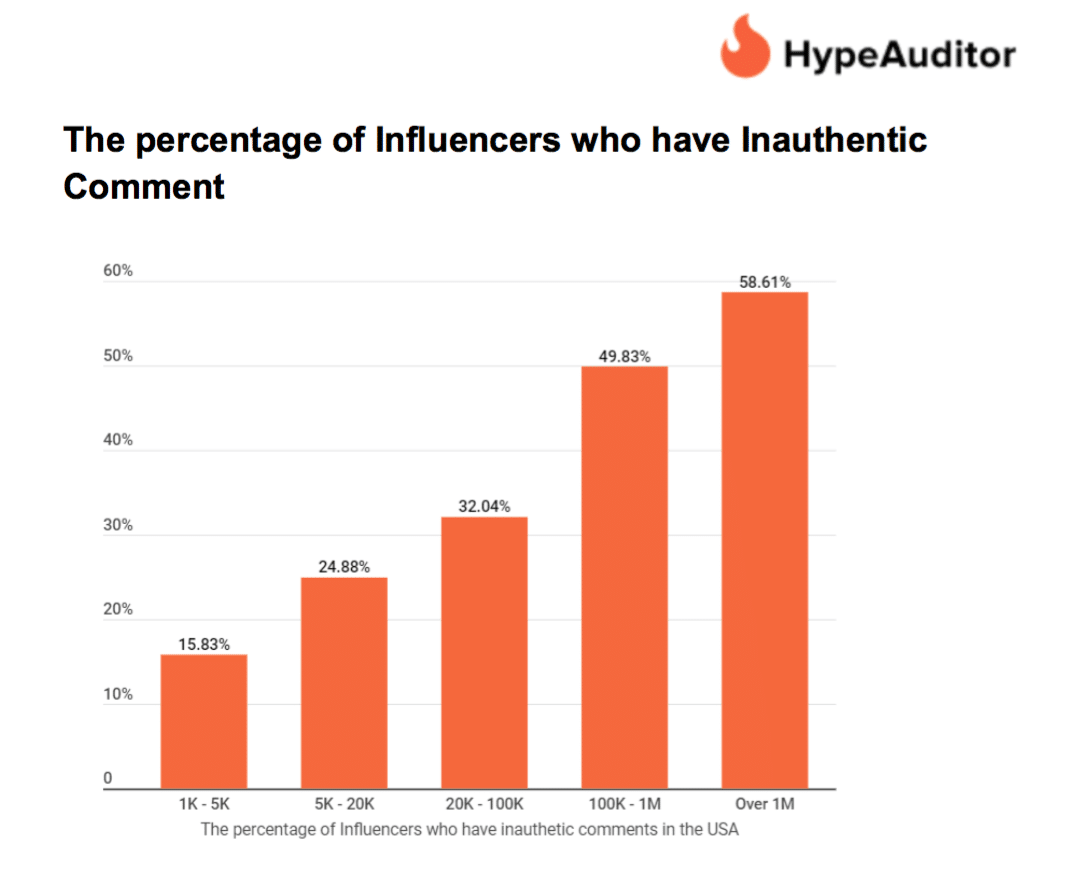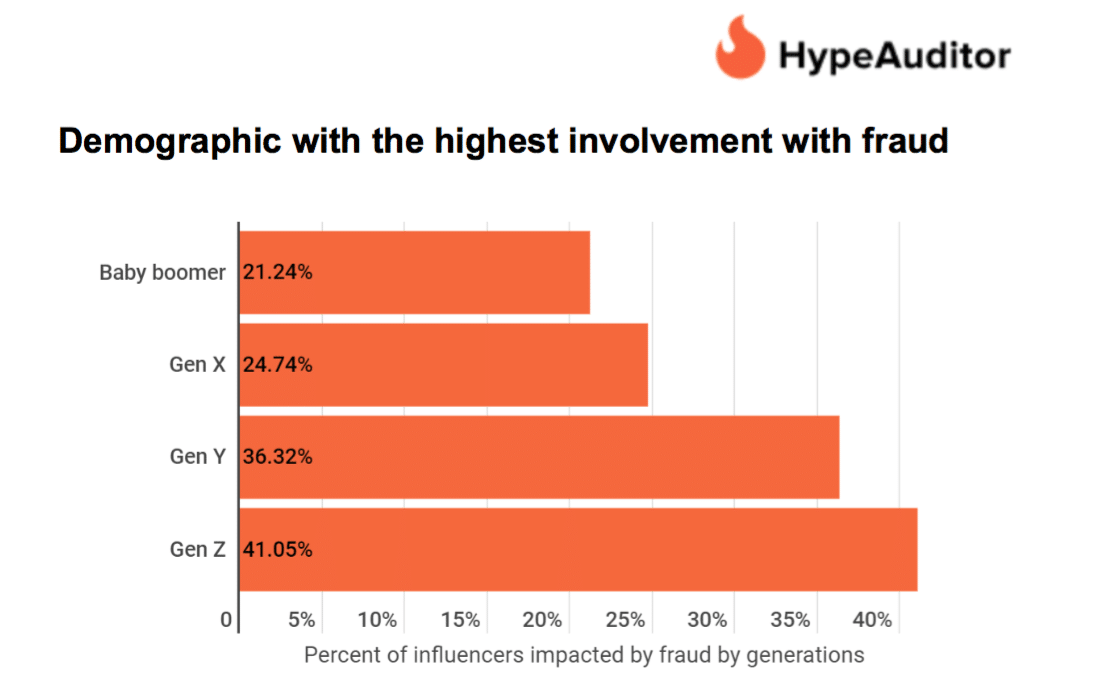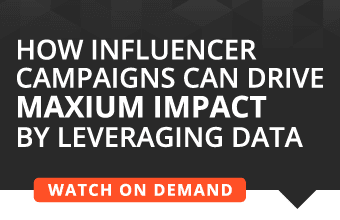Your influencers are racking up the follows, but is your brand really benefitting? There’s a good chance the results of your campaign may not pan out as planned, as new research from AI analytics platform HypeAuditor reveals only 59 percent of Instagram followers in the U.S. are real people, with the other 41 percent consisting of bots, inactive accounts, and mass followers (accounts with over 1,500 followings).
For brands seeking fair, transparent, and effective influencer marketing, these findings are distressing
After the release of its second annual State of Influencer Marketing 2021 report revealing 2020’s most influential social media leaders, as well as industry-pioneering best practices, the firm further analyzed the most common types of influencer fraud and the most impacted influencer demographics during the same timeframe, as explored in its first Fraud Report.
“Our latest findings reinforce the importance of understanding that not all influencers who are impacted by fraud do it on purpose or are even aware that it’s happening,” said Alex Frolov, CEO and co-founder of HypeAuditor, in a news release. “Uniquely, we use a specially trained model based on machine learning algorithms that analyzes over 53 patterns, which detects 95 percent of all known fraud activity, including fake influencers and engagement, which could cost advertisers millions of dollars each year.”
Additional findings include:
- On average, 33.89 percent of influencers in the U.S. are impacted by fraud (growth anomalies or have inauthentic comments: comments from bots, giveaway comments, comments from Pods).
- Inauthentic comments drive the most fraudulent activities across all sectors analyzed.
- Fake influencers and engagement could be costing advertisers up to $700 million each year.
- Influencers with between 100,000 and 1 million followers participate the most in giveaways.
- Overall, one-fourth of influencers in the U.S. have more than 30 percent inauthentic comments.
- Mega-influencers (over 1 million followers) experience the highest comment authenticity (58.61 percent of Mega-influencers have inauthentic comments).
- Mega-influencers often become victims of spam accounts.
- Gen Z influencers are impacted the most by fraud (41.05 percent), with females slightly more impacted than males (39.52 percent vs. 32.60 percent), followed by Gen Y (36.32 percent), Gen X (24.74 percent), and Baby Boomers (21.24 percent).
- Gen X and Baby Boomer influencers are impacted by close to 50 percent less than Gen Z is.
- Top three industries most impacted by fraud in the U.S.: fashion, modeling, and lifestyle.
- Top three industries least impacted by fraud: artists, comics & sketches, and water sports.
HypeAuditor’s State of Influencer Marketing 2020 report, from which the recent Fraud Report was sourced, analyzed over 12 million Instagram accounts, 4.5 million YouTube channels, and 5.2 million TikTok accounts.
Additionally, the research team used data from various sources, including market research agencies, the internet, social media companies, news media, crowdsourcing, and the company’s proprietary internal analysis. Subsequently, they processed the data by anonymizing, sorting and structuring, cleaning and removing any irregularities, and enriching the data. Finally, they transformed the data into intelligent estimations by using estimation and machine learning algorithms developed by their team of data scientists and influencer marketing experts.


